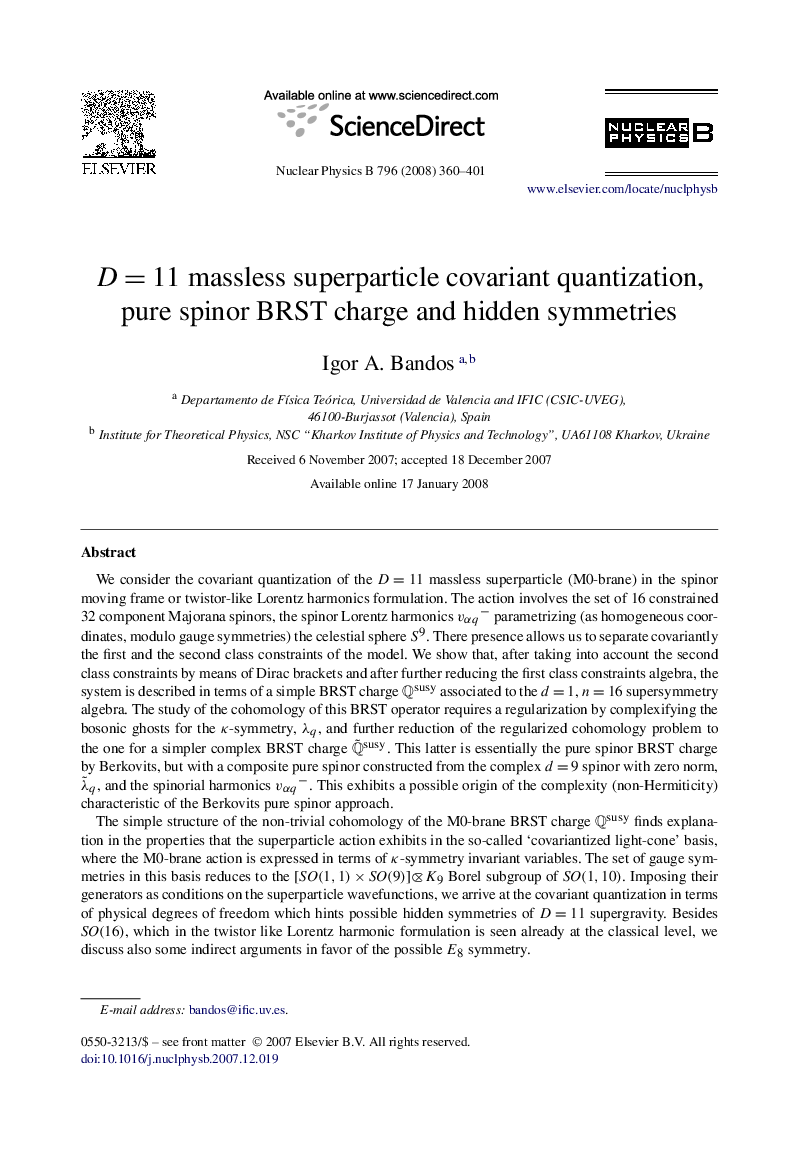| Article ID | Journal | Published Year | Pages | File Type |
|---|---|---|---|---|
| 1843890 | Nuclear Physics B | 2008 | 42 Pages |
We consider the covariant quantization of the D=11D=11 massless superparticle (M0-brane) in the spinor moving frame or twistor-like Lorentz harmonics formulation. The action involves the set of 16 constrained 32 component Majorana spinors, the spinor Lorentz harmonics vαq− parametrizing (as homogeneous coordinates, modulo gauge symmetries) the celestial sphere S9S9. There presence allows us to separate covariantly the first and the second class constraints of the model. We show that, after taking into account the second class constraints by means of Dirac brackets and after further reducing the first class constraints algebra, the system is described in terms of a simple BRST charge QsusyQsusy associated to the d=1d=1, n=16n=16 supersymmetry algebra. The study of the cohomology of this BRST operator requires a regularization by complexifying the bosonic ghosts for the κ -symmetry, λqλq, and further reduction of the regularized cohomology problem to the one for a simpler complex BRST charge Q˜susy. This latter is essentially the pure spinor BRST charge by Berkovits, but with a composite pure spinor constructed from the complex d=9d=9 spinor with zero norm, λ˜q, and the spinorial harmonics vαq−. This exhibits a possible origin of the complexity (non-Hermiticity) characteristic of the Berkovits pure spinor approach.The simple structure of the non-trivial cohomology of the M0-brane BRST charge QsusyQsusy finds explanation in the properties that the superparticle action exhibits in the so-called ‘covariantized light-cone’ basis, where the M0-brane action is expressed in terms of κ -symmetry invariant variables. The set of gauge symmetries in this basis reduces to the [SO(1,1)×SO(9)]K9[SO(1,1)×SO(9)]K9 Borel subgroup of SO(1,10)SO(1,10). Imposing their generators as conditions on the superparticle wavefunctions, we arrive at the covariant quantization in terms of physical degrees of freedom which hints possible hidden symmetries of D=11D=11 supergravity. Besides SO(16)SO(16), which in the twistor like Lorentz harmonic formulation is seen already at the classical level, we discuss also some indirect arguments in favor of the possible E8E8 symmetry.
